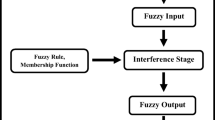Abstract.
A fuzzy logic-based system to classify olfactory signals is presented. The odour samples are obtained from an electronic nose that contains conducting polymer sensors with partially overlapping sensitivities to odours. The sensor responses are represented by means of the coefficients of their Fast Fourier Transform (FFT). A feature reduction method is applied to reduce the feature space dimension. Then, an Unsupervised Fuzzy Divisive Hierarchical Clustering (UFDHC) method is used to establish the optimal number of clusters in the data set, as well as the optimal cluster structure. The output of UFDHC is a binary hierarchy of fuzzy classes that are adopted to build a supervised fuzzy hierarchical classifier. At each level of the hierarchy a separating hyperplane of the two corresponding fuzzy classes is determined. The hyperplane identifies two crisp decision regions, which will be refined at the next level of the hierarchy. In this way, we obtain a hierarchy of regions, which defines a crisp decision tree. Each region is, therefore, related to a specific expected output of the system. Two small-scale applications demonstrate the effectiveness and the good recognition performance of the proposed method.
Similar content being viewed by others
Author information
Authors and Affiliations
Rights and permissions
About this article
Cite this article
Dumitrescu, D., Lazzerini, B. & Marcelloni, F. A Fuzzy Hierarchical Classification System for Olfactory Signals. PAA 3, 325–334 (2000). https://doi.org/10.1007/s100440070004
Issue Date:
DOI: https://doi.org/10.1007/s100440070004




